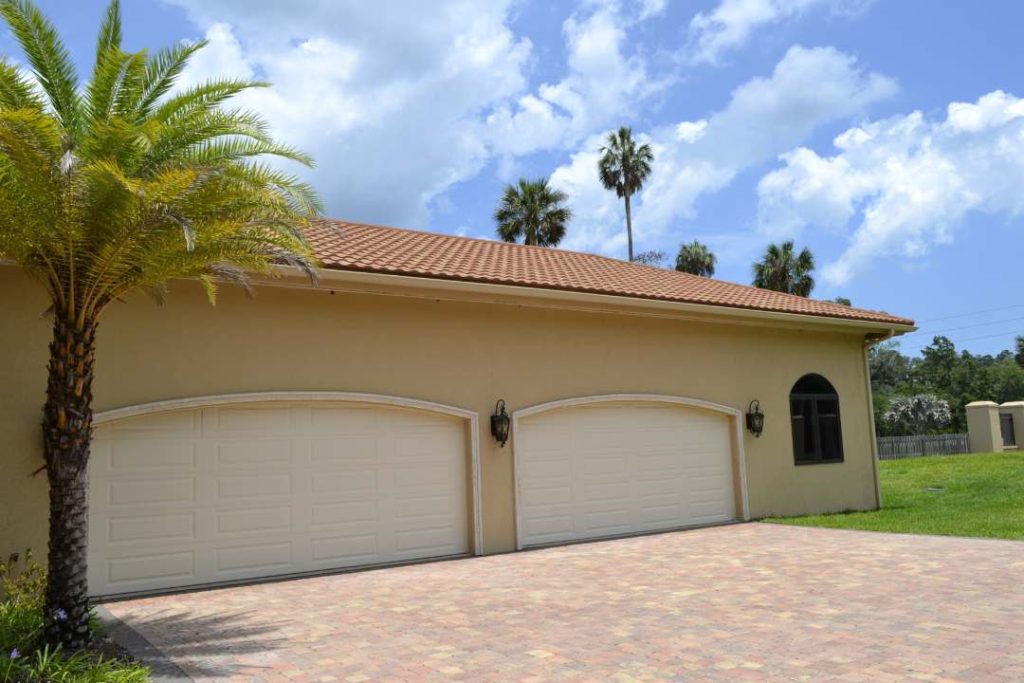
Garage Door Off Track? Here’s What to Do Before Calling a Technician
Meta Description: Struggling with a garage door off track? Learn safe DIY fixes, common causes, and prevention tips to get your door back on track without immediate professional help. Expert advice from High Grade Garage Doors.
If you’ve ever heard a loud bang from your garage and discovered your garage door off track, you know the frustration it brings. Whether it’s hanging crookedly or refusing to open smoothly, this common issue can disrupt your daily routine. The good news? Many cases of a garage door off track can be resolved with simple, at-home troubleshooting before you pick up the phone for a technician. In this guide, we’ll walk you through the causes, warning signs, step-by-step DIY solutions, and when it’s time to call in the experts. By following these problem-solving steps, you’ll save time and potentially avoid costly repairs.
As a homeowner, understanding your garage door system empowers you to maintain it effectively. Garage doors are heavy—often weighing 100-200 pounds—and rely on tracks, rollers, and springs for smooth operation. When something goes awry, like the door derailing, it could stem from everyday wear or a minor accident. Let’s dive into why this happens and how to fix a garage door off track safely.
Understanding Why Your Garage Door Goes Off Track
A garage door off track isn’t just an annoyance; it can pose safety risks if left unaddressed. Tracks are the vertical and horizontal metal guides that keep the door aligned as it moves. When the door slips out, it grinds to a halt, potentially damaging the door panels, tracks, or even your vehicle if you’re in a rush.
Common Causes of a Garage Door Off Track
Several factors can cause your garage door to come off the track. Identifying the root problem is the first step in solving it:
-
Loose or Worn Rollers: Rollers are wheels that guide the door along the tracks. Over time, especially in homes with frequent use, they wear out or loosen, allowing the door to jump the rail.
-
Damaged Tracks: Dents from impacts—like backing into the door with your car—or rust from exposure to moisture can bend the tracks, forcing the door off course.
-
Broken Springs or Cables: Torsion or extension springs provide the lift. If they snap or fray, the imbalance can yank the door off track. This is more serious and often requires professional handling.
-
Obstructions or Misalignment: Debris like leaves or tools left in the way, or a home settling that shifts the frame, can misalign everything.
-
Improper Installation or Maintenance: If your garage door was installed hastily or hasn’t been lubricated annually, small issues escalate quickly.
According to industry standards from the International Door Association (IDA), regular inspections prevent 80% of derailments. If your door is older than 10 years, these causes become more likely due to material fatigue.
Signs Your Garage Door Is Off Track
Spotting the problem early prevents further damage. Watch for these indicators:
-
Unusual noises: Grinding, squeaking, or banging during operation.
-
Visible misalignment: The door hangs unevenly or gaps appear between panels and the frame.
-
Remote or manual issues: The opener struggles, or you can’t lift the door by hand more than a few feet.
-
Safety sensor lights: Flashing indicators on the opener signal a track problem.
If you notice these, stop using the door immediately to avoid injury or worsening the issue.
Safe DIY Steps to Fix a Garage Door Off Track
Before calling a technician, try these beginner-friendly fixes. Always prioritize safety: Disconnect the power to the opener by unplugging it or flipping the breaker. Wear gloves and eye protection, and never attempt spring repairs—these are under high tension and can cause severe injury.
Step 1: Inspect and Clear Obstructions
Start with the basics to rule out simple fixes.
-
Visually check the tracks for bends, dents, or buildup. Use a flashlight to inspect from top to bottom.
-
Remove any debris: Sweep out dirt, leaves, or objects blocking the path.
-
Tighten hardware: Use a socket wrench to secure loose bolts on the tracks and brackets. Avoid over-tightening, which can warp the metal.
This step resolves about 30% of off-track issues, per common homeowner reports.
Step 2: Realign the Door and Rollers
If the door is slightly off, realignment might get it back on track.
-
Lift the Door Manually: With help from another person, carefully raise the door to about halfway up. Secure it with a clamp or vice grip on the track above the top roller to hold it in place.
-
Reposition Rollers: Gently push the bottom of the door toward the track while inspecting the rollers. If a roller has popped out, guide it back into the track slot. Wiggle the door side to side if needed, but don’t force it.
-
Check Track Alignment: Use a level to ensure tracks are plumb (vertical) and level (horizontal). Loosen mounting bolts, adjust slightly, and retighten.
-
Lubricate Moving Parts: Apply a garage-door-specific lubricant (like silicone spray) to rollers, hinges, and tracks. Avoid WD-40, as it attracts dirt.
Test the door by removing the clamp and operating it manually a few times. If it glides smoothly, reconnect the power and test the opener.
Step 3: Address Minor Track Damage
For small dents under 1/4 inch deep:
-
Use a rubber mallet to gently tap the track back into shape from the inside. Place a wooden block against the dent for even pressure.
-
Straighten with pliers if needed, but only on the outer edge to avoid cracking.
If the track is severely bent, stop here—this calls for replacement parts.
These DIY methods work best for single-car garages with standard sectional doors. For insulated or custom models, proceed cautiously, as they may have unique components.
When to Call a Professional for Garage Door Off Track Issues
While DIY fixes handle minor problems, some situations demand expert intervention to ensure safety and longevity.
Red Flags Requiring Immediate Help
-
Spring or Cable Failure: If you see frayed cables or hear a loud snap, don’t touch it. These components store immense energy—equivalent to a car crash—and improper handling leads to thousands of injuries annually, as reported by the Consumer Product Safety Commission (CPSC).
-
Severe Misalignment or Damage: If the door won’t budge more than a foot or the frame is bent, structural issues might be at play.
-
Frequent Recurrence: If this happens often, underlying problems like a failing opener motor or foundation shifts need diagnosis.
-
Noisy or Jerky Operation Post-Fix: Persistent grinding indicates deeper wear.
Professionals use specialized tools like winding bars for springs and can replace tracks in under an hour, often with warranties. Expect costs from $100-$300 for basic realignments to $500+ for full repairs, depending on your location.
In Arizona’s hot climate, where dust and heat accelerate wear, annual tune-ups are essential. Delaying pro help can lead to door replacement, costing $1,000 or more.
Preventing Your Garage Door from Going Off Track
Prevention is the best fix. Incorporate these habits into your routine to keep things running smoothly.
Regular Maintenance Checklist
-
Monthly Inspections: Check rollers, tracks, and hardware for wear. Listen for odd sounds during cycles.
-
Annual Lubrication and Balancing: Test balance by disconnecting the opener and lifting halfway—if it stays put, it’s balanced. Lubricate twice a year.
-
Clear the Area: Keep the garage floor free of clutter and park vehicles carefully to avoid bumps.
-
Weatherproofing: In rainy seasons, seal gaps around the door to prevent rust.
Upgrading for Longevity
Consider these enhancements:
-
High-quality rollers: Nylon ones last longer than steel.
-
Reinforced tracks: Opt for heavier-gauge steel if replacing.
-
Smart openers: Modern models with sensors detect issues early via apps.
By staying proactive, you extend your garage door’s life to 15-20 years, saving hundreds in repairs.
In summary, a garage door off track often stems from preventable causes like loose parts or obstructions. With careful inspection and these DIY steps, you can resolve many issues yourself. However, safety first—know your limits and call pros for anything complex.
For reliable service in the Phoenix area, trust High Grade Garage Doors. Our certified technicians handle everything from quick realignments to full installations with a focus on quality and customer satisfaction. Don’t risk DIY dangers—contact us today at (602) 837-1888 for a free consultation and get your garage door back on track fast.


